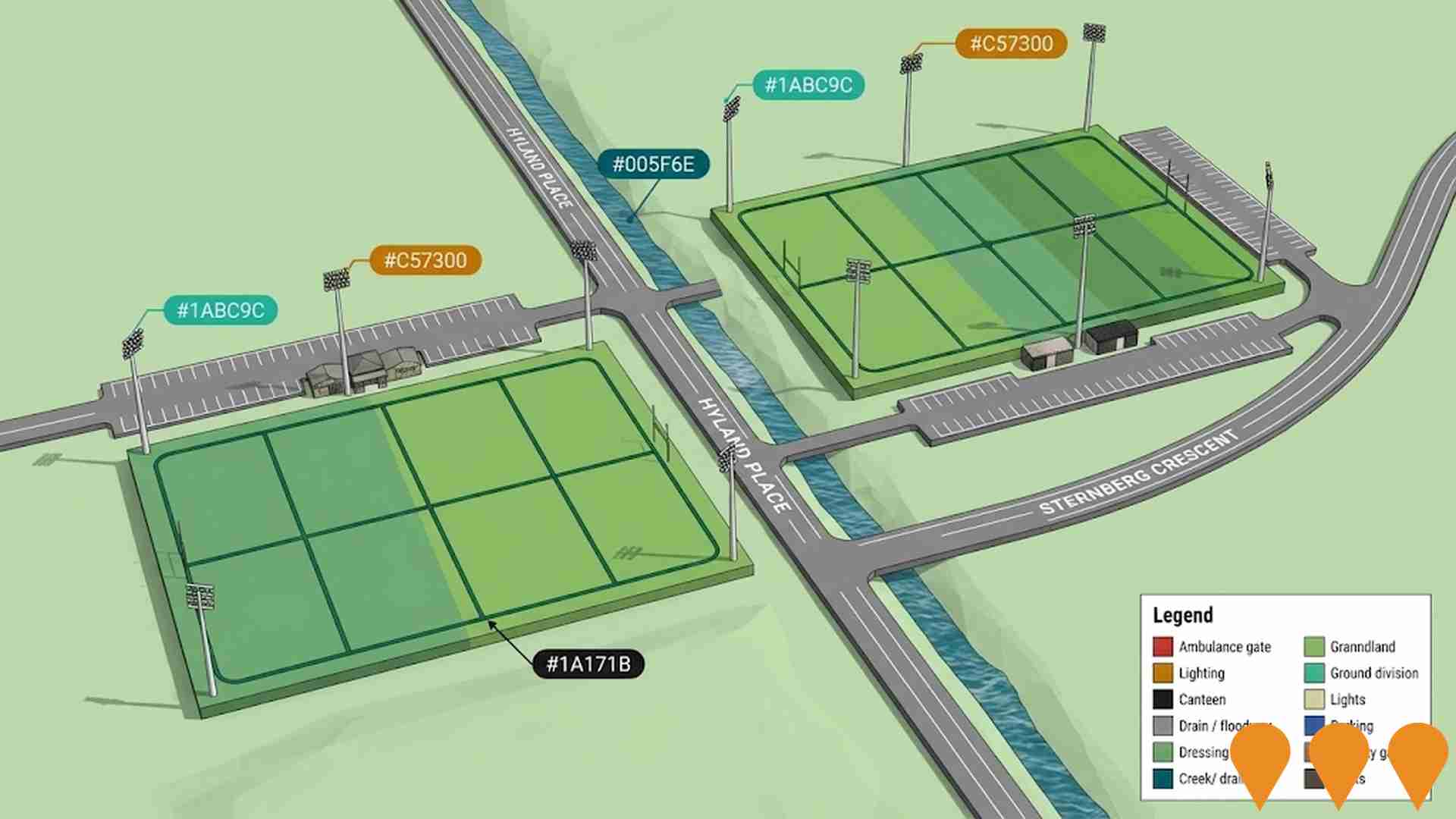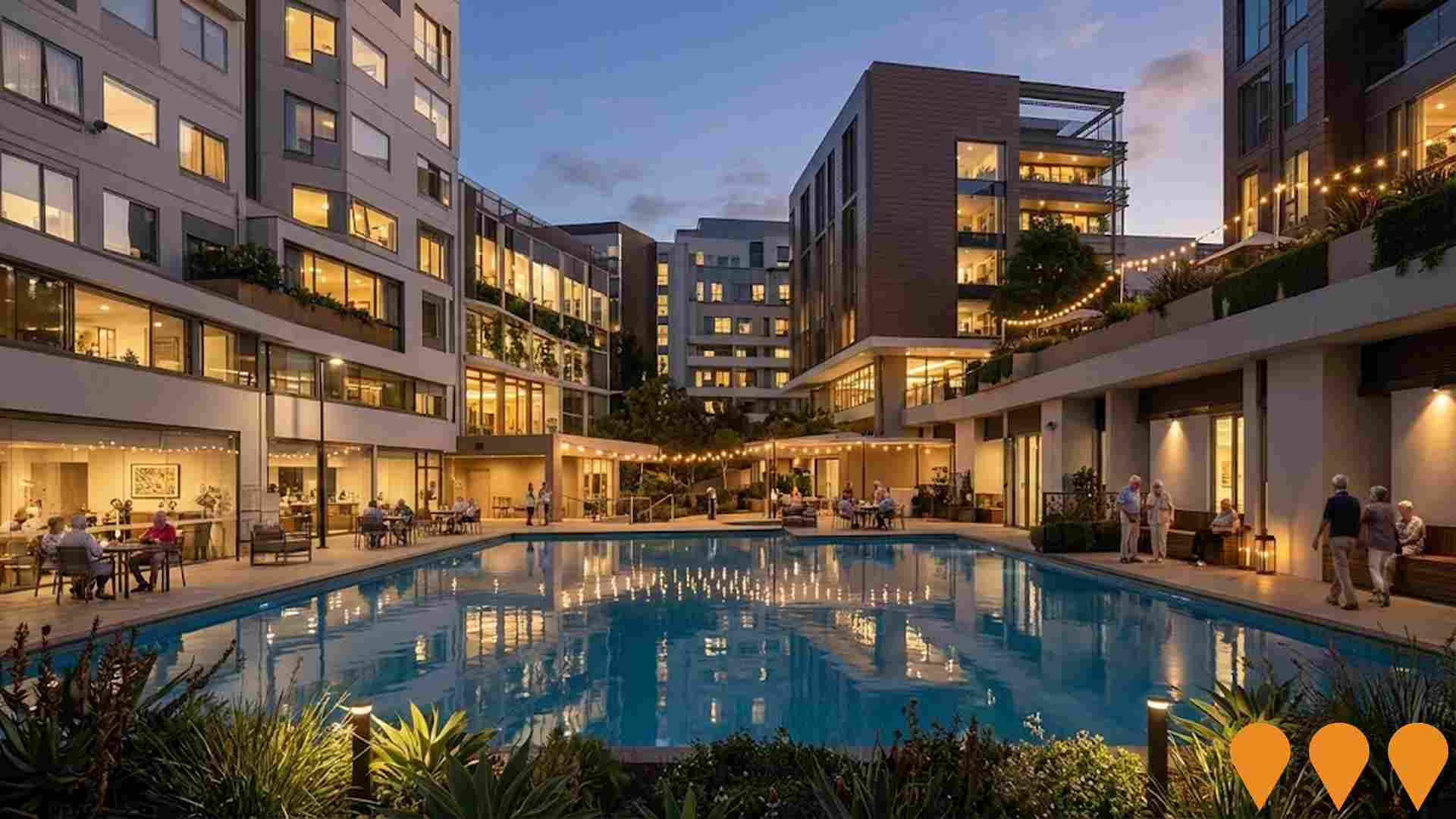Chart Color Schemes
est. as @ -- *
ABS ERP | -- people | --
2021 Census | -- people
Sales Activity
Curious about local property values? Filter the chart to assess the volume and appreciation (including resales) trends and regional comparisons, or scroll to the map below view this information at an individual property level.
Find a Recent Sale
Sales Detail
Population
Oxley has shown very soft population growth performance across periods assessed by AreaSearch
Oxley (ACT)'s population is around 1,667 as of Aug 2025. This reflects a decrease of 36 people since the 2021 Census, which reported a population of 1,703 people. The change is inferred from the estimated resident population of 1,665 in June 2024 and an additional 1 validated new address since the Census date. This level of population equates to a density ratio of 1,529 persons per square kilometer, above the average seen across national locations assessed by AreaSearch. While Oxley experienced a 2.1% decline since census, the SA3 area achieved 0.2% growth, highlighting divergent population trends. Population growth for the area was primarily driven by natural growth contributing approximately 65.5% of overall population gains during recent periods.
AreaSearch adopts ABS/Geoscience Australia projections for each SA2 area, released in 2024 with a base year of 2022. For areas not covered and years post-2032, age group growth rates from the ACT Government's SA2 area projections are adopted, using 2022 as a base. Projections indicate an overall population decline of 52 persons by 2041, with specific age cohorts expected to grow, notably the 75 to 84 age group projected to expand by 64 people.
Frequently Asked Questions - Population
Development
The level of residential development activity in Oxley is very low in comparison to the average area assessed nationally by AreaSearch
Oxley has seen minimal dwelling approvals in recent years.
Between FY21 and FY25, only 1 home was approved, with no approvals recorded so far in FY26. Despite population decline, the area maintains adequate housing supply relative to demand, fostering a balanced market with diverse buyer options. Compared to Australian Capital Territory, Oxley's building activity is significantly lower, supporting stronger demand and higher values for established properties.
This aligns with national averages, indicating an established area potentially hindered by planning limitations. With stable or declining population expected, Oxley may experience reduced housing pressure, presenting opportunities for buyers.
Frequently Asked Questions - Development
Infrastructure
Oxley has moderate levels of nearby infrastructure activity, ranking in the 48thth percentile nationally
Three projects have been identified by AreaSearch as potentially impacting the area: Dairy Farmers Hill Precinct (1 Dairy Road), Canberra Light Rail Stage 4 from Woden to Tuggeranong, Erindale Group Centre Master Plan Implementation - Stage 1, and Tuggeranong Foreshore Improvements.
Professional plan users can use the search below to filter and access additional projects.
INFRASTRUCTURE SEARCH
 Denotes AI-based impression for illustrative purposes only, not to be taken as definitive under any circumstances. Please follow links and conduct other investigations from the project's source for actual imagery. Developers and project owners wishing us to use original imagery please Contact Us and we will do so.
Denotes AI-based impression for illustrative purposes only, not to be taken as definitive under any circumstances. Please follow links and conduct other investigations from the project's source for actual imagery. Developers and project owners wishing us to use original imagery please Contact Us and we will do so.
Frequently Asked Questions - Infrastructure
Low and Mid-Rise Housing Policy
State-wide NSW planning reforms via amendments to the State Environmental Planning Policy to enable more diverse low and mid-rise housing (dual occupancies, terraces, townhouses, manor houses and residential flat buildings up to 6 storeys) in well-located areas within 800 m of selected train, metro and light-rail stations and town centres. Stage 1 (dual occupancies in R2 zones statewide) commenced 1 July 2024. Stage 2 (mid-rise apartments, terraces and dual occupancies near stations) commenced 28 February 2025. Expected to facilitate up to 112,000 additional homes over the next five years.
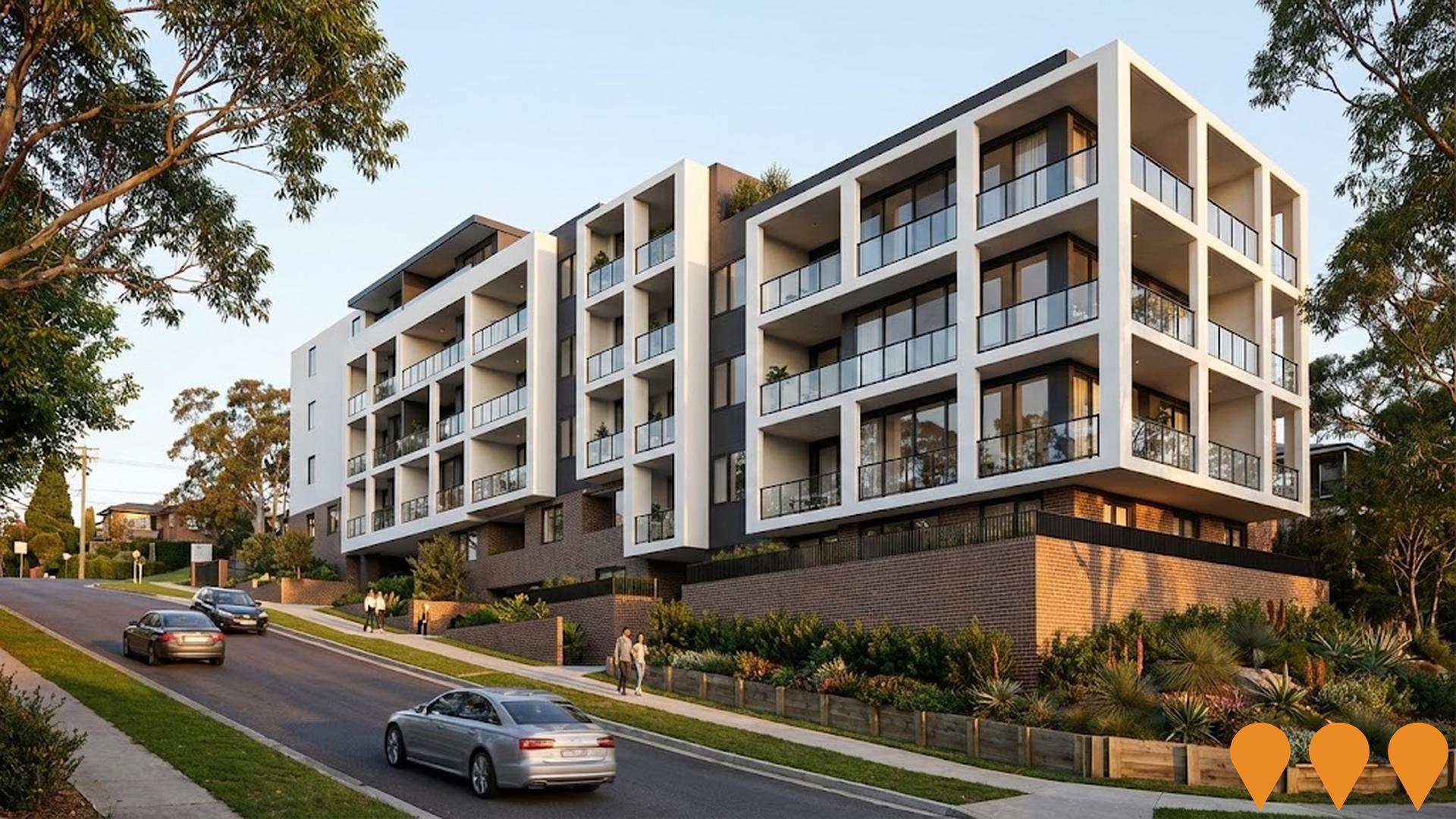
Canberra Light Rail Stage 4 - Woden to Tuggeranong
Proposed extension of Canberra's light rail network from Woden Town Centre south to Tuggeranong Town Centre via Mawson and the Athllon Drive corridor. This future stage aims to complete the north-south radial mass transit spine, connecting major residential, employment and activity centres while supporting bus, cycling, walking and private vehicle integration.
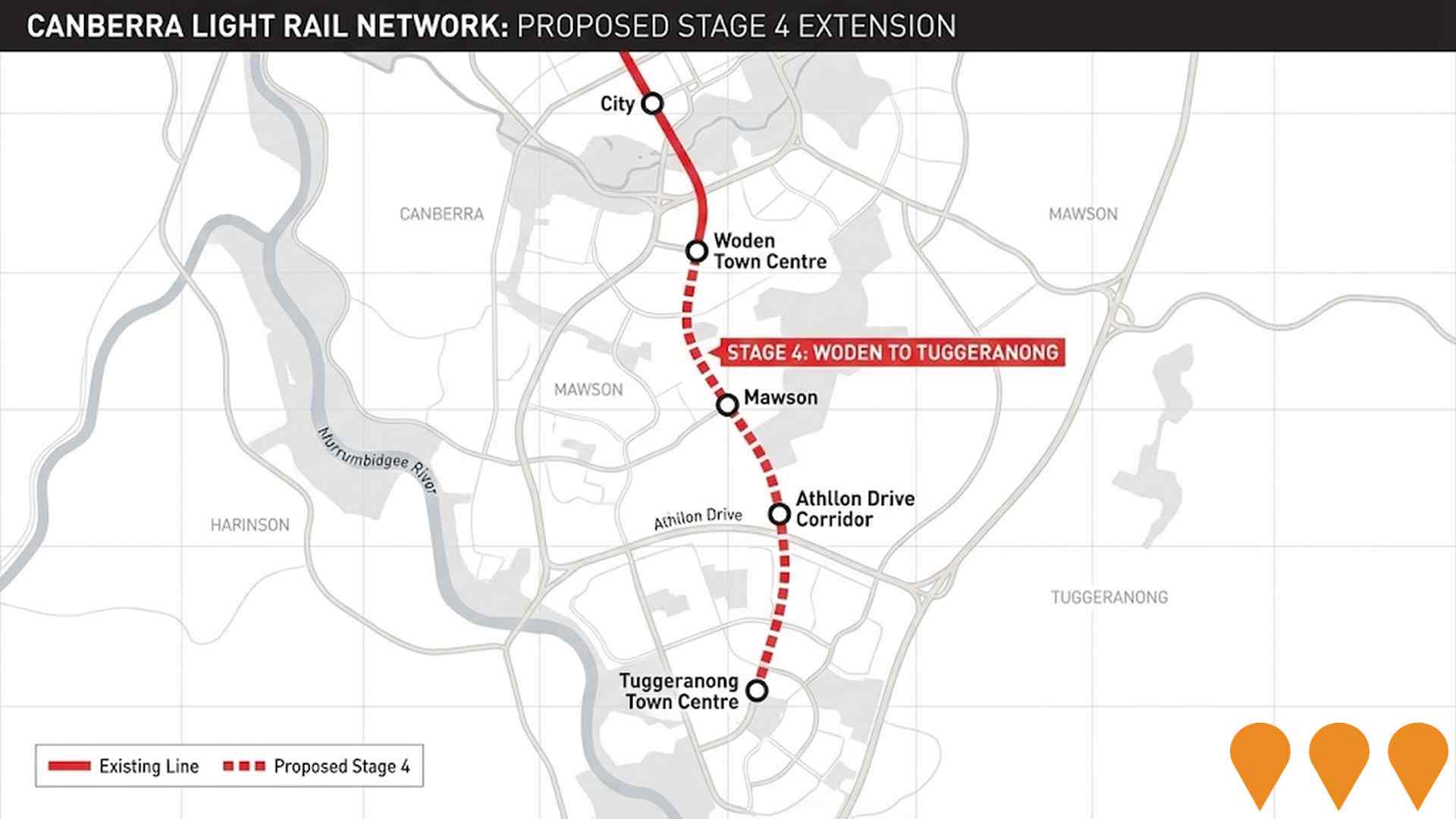
Erindale Group Centre Master Plan Implementation - Stage 1
Major revitalisation of the Erindale precinct including new community facilities, upgraded public realm, improved active travel links, and preparation for future mixed-use and residential development directly adjoining Wanniassa. The Erindale Group Centre master plan is a non-statutory document that outlines a vision to guide growth and development of the centre over the next 30 years.
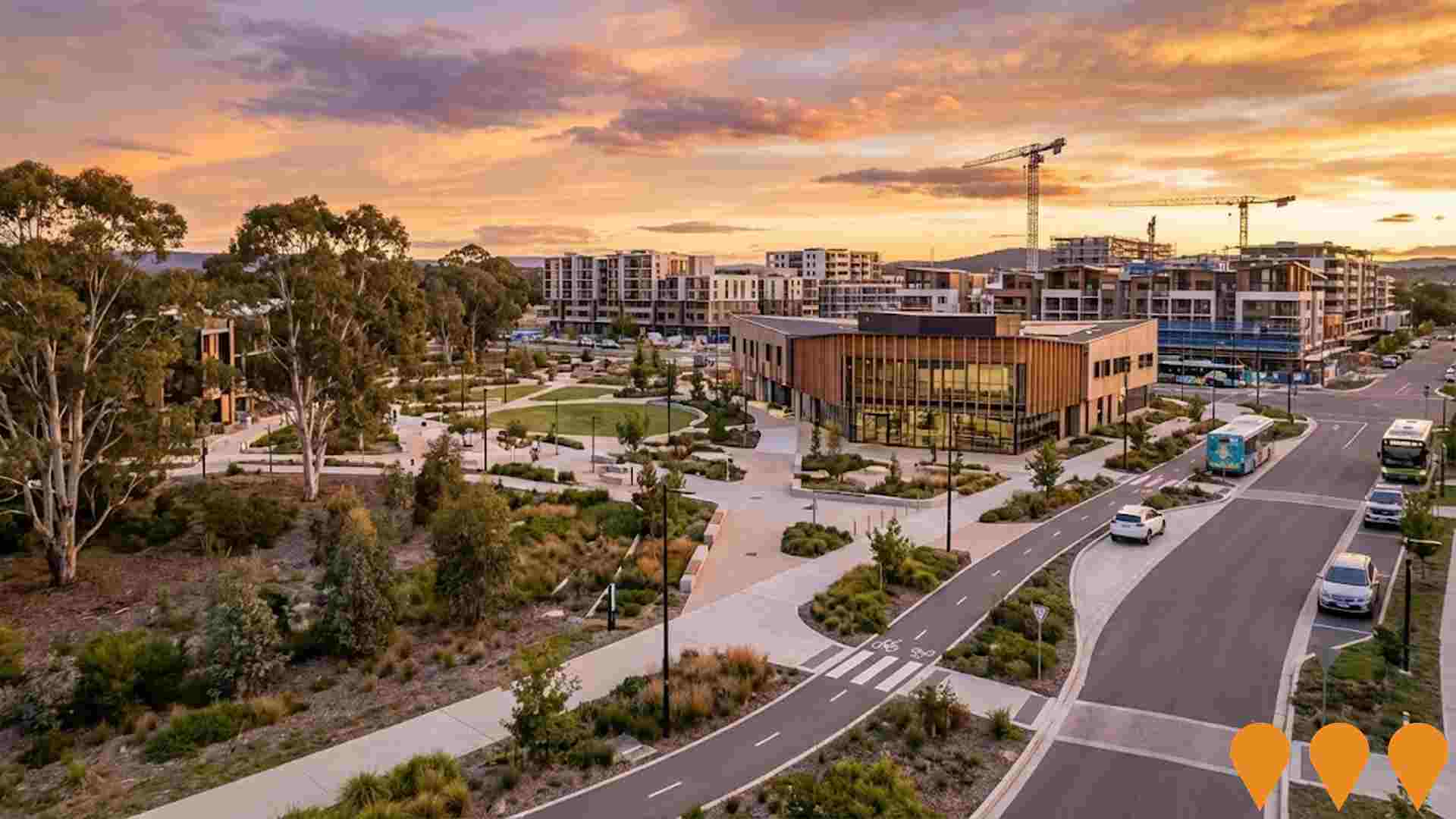
Tuggeranong Foreshore Improvements
ACT Government delivered a $4.75 million upgrade completed in 2024 to revitalise the Lake Tuggeranong foreshore and improve access between the town centre and the lake. Works included a renewed Town Park playground with accessible equipment, widened and realigned College Walk with low carbon pavement using 540 recycled tyres, upgraded Bartlet Place crossing and Reed Street paths, revitalised boardwalk with new decking, refurbished wayfinding, new lighting, landscaping and furniture, and upgraded toilet facilities with accessible amenities.

Enhanced bus and light rail corridors (Belconnen & Queanbeyan to Central Canberra)
ACT is progressing an integrated program to enhance high-frequency bus and future light rail corridors that link Belconnen and Queanbeyan with central Canberra. Light Rail Stage 2A (City to Commonwealth Park) commenced construction in early 2025 with services targeted from 2028, while planning and approvals continue for Stage 2B to Woden. The ACT Government has acknowledged and is planning upgrades for the Belconnen-to-City bus corridor as groundwork for a future east-west light rail Stage 3, and is coordinating cross-border public transport initiatives with NSW through the Queanbeyan Region Integrated Transport Plan and the ACT-NSW MoU for Regional Collaboration.
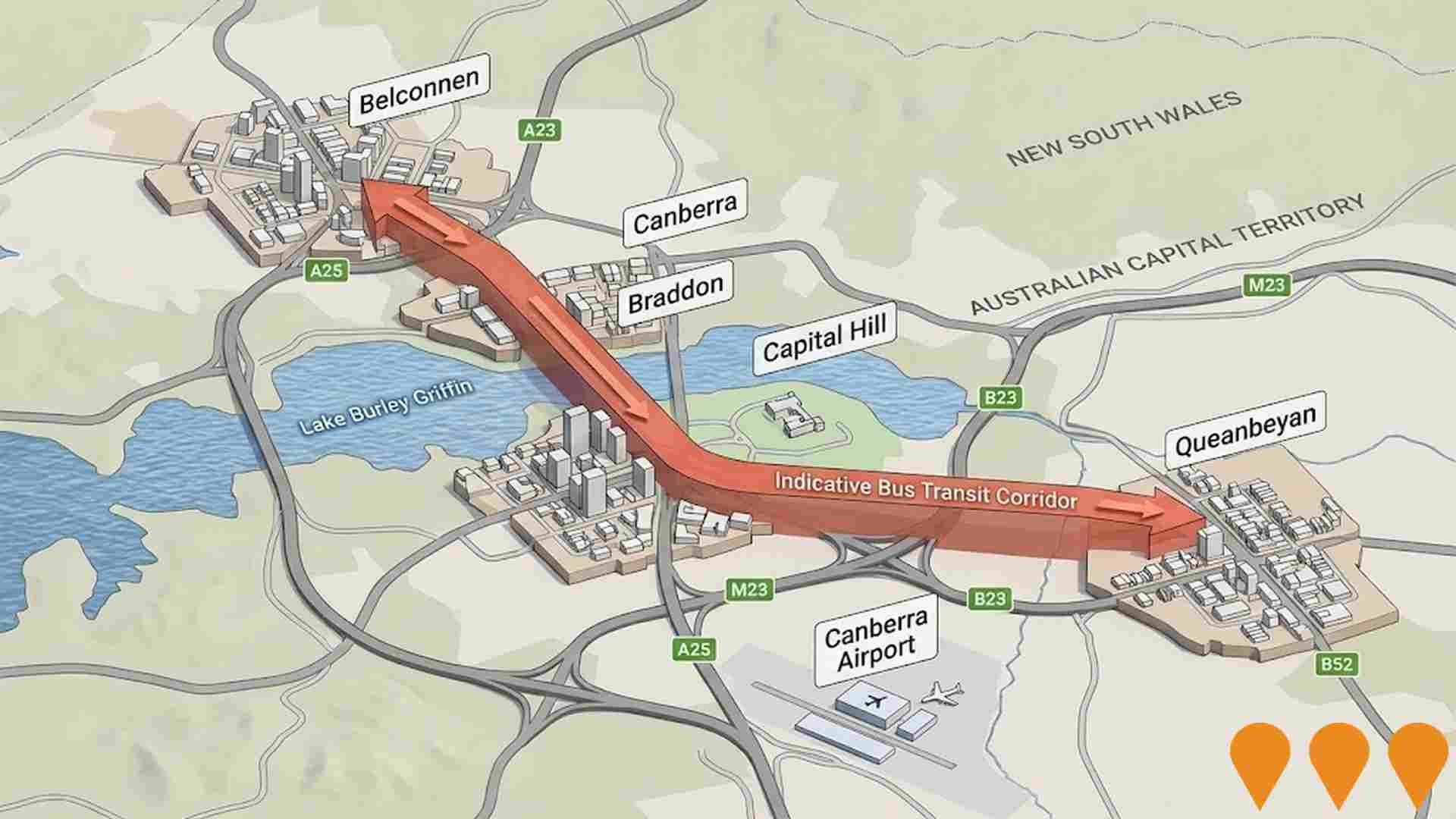
HumeLink
HumeLink is a new 500kV transmission line project connecting Wagga Wagga, Bannaby, and Maragle, spanning approximately 365 km. It includes new or upgraded infrastructure at four locations and aims to enhance the reliability and sustainability of the national electricity grid by increasing the integration of renewable energy sources such as wind and solar.
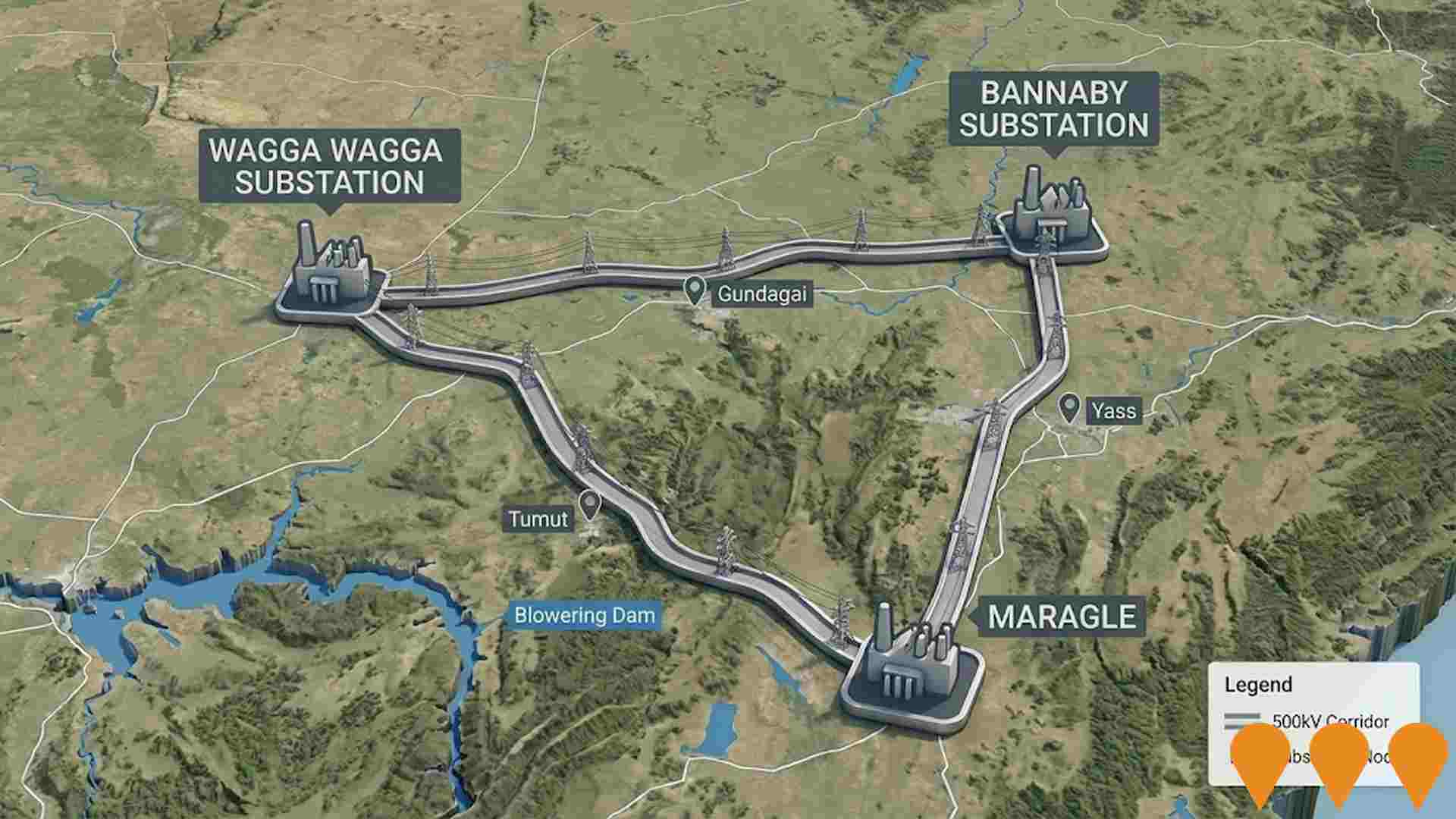
Queanbeyan Regional Integrated Transport Plan
Comprehensive transport planning initiative with 64 key actions for next 10 years. Addresses road safety, active transport connectivity, public transport availability, and future transport needs. Improved connections between Queanbeyan and ACT.
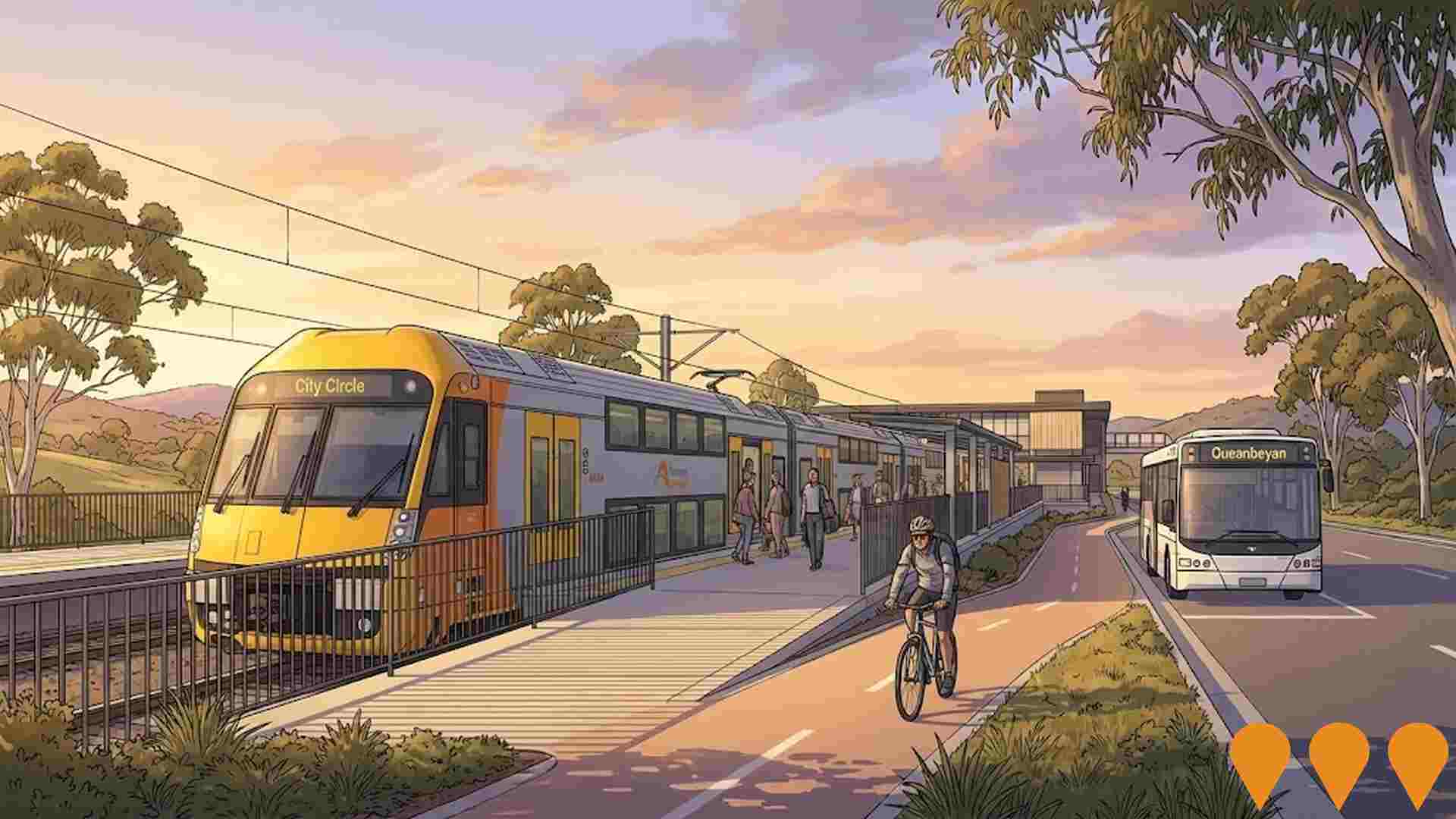
Big Canberra Battery (Williamsdale BESS)
A 250 MW / 500 MWh battery energy storage system at Williamsdale in southern Canberra, delivered by Eku Energy as Stream 1 of the ACT Government's Big Canberra Battery. Construction commenced in November 2024 with partners CPP and Tesla supplying Megapack systems. The asset will connect to Evoenergy's 132 kV network near the Williamsdale substation to provide two hours of dispatchable power, grid services and reliability for the ACT. Target operations in 2026.
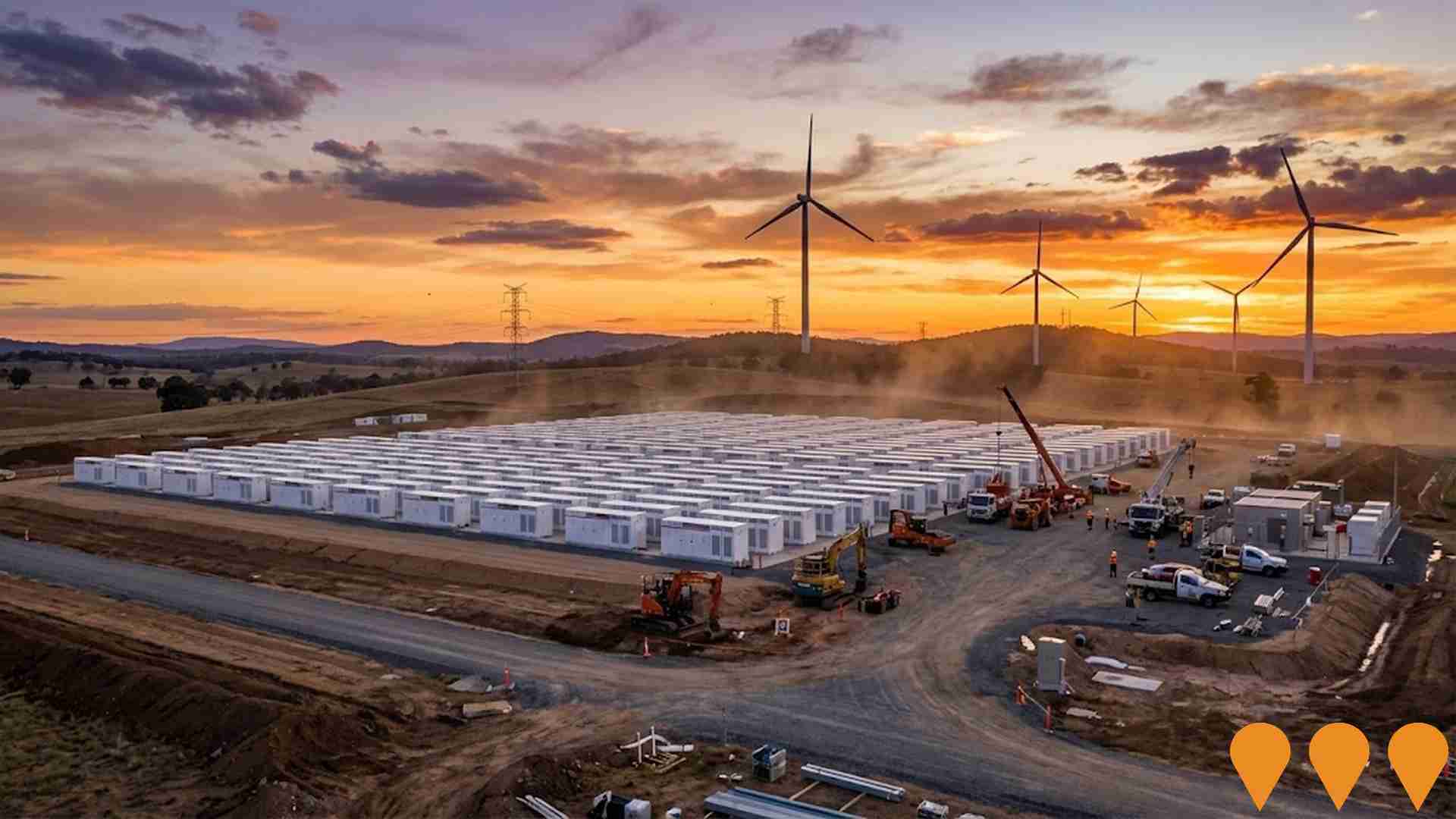
Employment
The labour market performance in Oxley lags significantly behind most other regions nationally
Oxley ACT has a well-educated workforce with significant representation in essential services sectors. Its unemployment rate was 7.6% as of June 2025, with an estimated employment growth of 1.7% over the past year.
In Oxley, 857 residents were employed while the unemployment rate stood at 4.1%, which is 0.7 percentage points higher than the ACT's rate of 3.4%. Workforce participation in Oxley was 64.0%, compared to the ACT's 69.6%. The dominant employment sectors among residents included public administration & safety, health care & social assistance, and construction.
However, professional & technical services employed only 7.2% of local workers, below the ACT's average of 11.1%. Employment opportunities locally appeared limited, as indicated by the Census working population count versus resident population. In the 12-month period ending June 2025, employment increased by 1.7%, while labour force grew by 1.5%, causing unemployment to fall by 0.1 percentage points. This contrasted with the ACT, where employment rose by 1.9%, labour force grew by 1.6%, and unemployment fell by 0.3 percentage points. Jobs and Skills Australia's national employment forecasts from May 2025 projected a 6.6% increase in employment over five years and a 13.7% increase over ten years. Applying these projections to Oxley's employment mix suggested local growth of approximately 6.4% over five years and 13.2% over ten years, based on simple weighting extrapolation for illustrative purposes only.
Frequently Asked Questions - Employment
Income
The economic profile demonstrates exceptional strength, placing the area among the top 10% nationally based on comprehensive AreaSearch income analysis
Oxley had a median income among taxpayers of $65,932 during financial year 2022. The average income was $75,922 in the same period. These figures are high compared to national levels and those in the Australian Capital Territory, which were $68,678 and $83,634 respectively. By September 2025, estimated median income would be approximately $74,899 and average income around $86,247, based on a 13.6% increase since financial year 2022. According to the 2021 Census, household, family, and personal incomes in Oxley rank highly nationally, between the 88th and 88th percentiles. The earnings profile shows that 33.3% of locals (555 people) fall into the $1,500 - 2,999 weekly income category, which is consistent with broader trends in the surrounding region at 34.3%. A substantial presence of higher earners exists, with 38.3% exceeding $3,000 weekly, indicating strong purchasing power within the community. After housing costs, residents retain 87.3% of their income, reflecting strong purchasing power. The area's SEIFA income ranking places it in the 7th decile.
Frequently Asked Questions - Income
Housing
Oxley is characterized by a predominantly suburban housing profile, with above-average rates of outright home ownership
Oxley's dwelling structures, as per the latest Census, consisted of 92.5% houses and 7.5% other dwellings. In comparison, the Australian Capital Territory had 79.6% houses and 20.4% other dwellings. Home ownership in Oxley stood at 34.2%, with mortgaged properties at 42.9% and rented ones at 23.0%. The median monthly mortgage repayment was $2,150, higher than the Australian Capital Territory average of $2,000. Median weekly rent in Oxley was $400, compared to the Australian Capital Territory's $425. Nationally, Oxley's mortgage repayments were significantly higher at $2,150 against the Australian average of $1,863, while rents were also higher at $400 versus the national figure of $375.
Frequently Asked Questions - Housing
Household Composition
Oxley features high concentrations of family households, with a higher-than-average median household size
Family households account for 79.2% of all households, including 35.5% couples with children, 29.6% couples without children, and 12.0% single parent families. Non-family households make up the remaining 20.8%, with lone person households at 19.9% and group households comprising 1.6%. The median household size is 2.7 people, which is larger than the Australian Capital Territory average of 2.6.
Frequently Asked Questions - Households
Local Schools & Education
The educational profile of Oxley exceeds national averages, with above-average qualification levels and academic performance metrics
In the given area, university qualification rates stand at 33.0%, significantly lower than the SA4 region average of 46.8%. This disparity suggests both a challenge and an opportunity for targeted educational initiatives. Bachelor degrees are most prevalent at 20.8%, followed by postgraduate qualifications (7.6%) and graduate diplomas (4.6%). Trade and technical skills are prominent, with 33.0% of residents aged 15+ holding vocational credentials – advanced diplomas at 11.9% and certificates at 21.1%.
Educational participation is notably high, with 29.1% of residents currently enrolled in formal education. This includes 10.5% in primary education, 8.7% in secondary education, and 4.0% pursuing tertiary education. Educational facilities appear to be located outside the immediate catchment boundaries, requiring families to access schools in neighboring areas.
Frequently Asked Questions - Education
Schools Detail
Nearby Services & Amenities
Transport
Transport servicing is moderate compared to other areas nationally based on assessment of service frequency, route connectivity and accessibility
Transport analysis indicates 11 operational public transport stops in Oxley, consisting of bus services only. These stops are served by four distinct routes, collectively facilitating 385 weekly passenger trips. Transport accessibility is deemed excellent, with residents situated an average of 182 meters from the nearest stop.
Service frequency averages 55 trips daily across all routes, translating to approximately 35 weekly trips per individual stop.
Frequently Asked Questions - Transport
Transport Stops Detail
Health
Health performance in Oxley is lower than average with common health conditions somewhat prevalent across both younger and older age cohorts
Oxley faces significant health challenges with common health conditions prevalent across both younger and older age cohorts.
The rate of private health cover is very high at approximately 57%, covering around 951 people. Mental health issues impact 9.9% of residents, while arthritis affects 8.6%. A total of 64.7% declare themselves completely clear of medical ailments, compared to 66.1% across the Australian Capital Territory. The area has 18.7% of residents aged 65 and over (311 people), which is higher than the 17.6% in the Australian Capital Territory. Health outcomes among seniors are above average, performing better than the general population in health metrics.
Frequently Asked Questions - Health
Cultural Diversity
The level of cultural diversity witnessed in Oxley was found to be above average when compared nationally for a number of language and cultural background related metrics
Oxley's population shows above average cultural diversity, with 19.2% born overseas and 15.1% speaking a language other than English at home. Christianity is the predominant religion in Oxley, accounting for 48.0% of its population. Notably, Judaism is overrepresented compared to the Australian Capital Territory average, comprising 0.4% versus 0.1%.
The top three ancestry groups in Oxley are Australian (27.5%), English (25.6%), and Irish (9.2%). Some ethnic groups show significant differences: French at 0.7% (regional average is 0.4%), Welsh at 0.7% (regional average is 0.5%), and Sri Lankan at 0.5% (regional average is 0.3%).
Frequently Asked Questions - Diversity
Age
Oxley's population is slightly older than the national pattern
Oxley's median age is 38 years, which is higher than the Australian Capital Territory average of 35 but equivalent to the Australian median of 38. Compared to the Australian Capital Territory, Oxley has a higher concentration of residents aged 65-74 (13.6%) but fewer residents aged 35-44 (11.6%). Between the 2021 Census and the present day, the population in the 25 to 34 age group has grown from 12.6% to 15.5%, while the 75 to 84 cohort increased from 2.5% to 4.2%. Conversely, the 55 to 64 cohort has declined from 15.7% to 13.0%, and the 5 to 14 group dropped from 14.2% to 11.9%. By 2041, demographic modeling suggests Oxley's age profile will change significantly. The 75 to 84 cohort is projected to grow by 89%, adding 61 residents to reach 131. Residents aged 65 and above are expected to drive 72% of population growth, reflecting aging trends in the demographic. Meanwhile, the 0 to 4 and 45 to 54 cohorts are anticipated to experience population declines.

